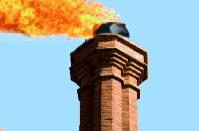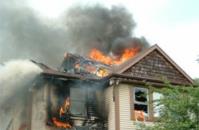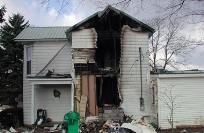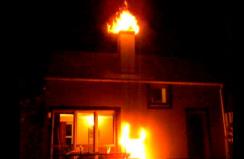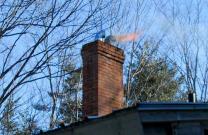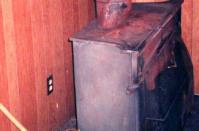PUBLIC SERVICE ANNOUNCEMENT:
Howell Community Connection
SAFETY TIPS FOR YOUR HOME
The Howell Fire Bureau offers the following safety information. Heating equipment is the second leading cause of home fires in the United States and the second leading cause of home fire deaths in this country. Heater fires are the leading cause of fire deaths in the southeastern U.S.
Home heating equipment causes an estimated 83,400 reported fires, 498 civilian deaths and 2,163 civilian injuries. Misuse or improper maintenance causes most of these fires.
December, January and February are the leading months for home fires as well as home fire deaths in this country. On average, more than a third of home fire deaths occur during the winter months.
The high cost of home heating fuels and utilities have caused many Americans to search for alternate sources of home heating. The use of portable electric space heaters is rapidly increasing and fireplaces are burning wood and man-made logs. In some places the use of wood burning stoves is growing.
THE LEADING CAUSES OF HOME HEATING FIRES:
● Placing things that can burn too close to space and portable heaters.
● Failure to clean chimneys and connectors.
● Improper design and installation.
● Fueling errors involving liquid or gas-fueled heaters.
● Leaving auxiliary heating equipment unattended.
All these methods of heating may be acceptable. They are however, a major contributing factor in residential fires. Many of these fires can be prevented. The following fire safety tips can help you maintain a fire safe home this winter.
FIREPLACES
Fireplaces are becoming a very common heat source in homes. Careful attention to safety can minimize their fire hazards. To use them safely:
● Be sure it is installed properly.
● Have the chimney inspected annually and cleaned if necessary, especially if it has not been used for some time.
● Do not use flammable liquids to start or accelerate any fire.
● Keep glass or metal screen in front of the fireplace opening, to prevent embers or sparks from jumping out, unwanted material from going in, and help prevent the possibility of burns to occupants.
● Don’t use excessive amounts of paper to build roaring fires.It is possible to ignite creosote in the chimney by over building the fire.
● Never burn charcoal indoors. Burning charcoal can give off lethal amounts of carbon monoxide.
● Keep flammable and combustible materials away from your mantel. A spark from the fireplace could easily ignite these materials.
● Before going to sleep, be sure your fireplace fire is out. NEVER close your damper with hot ashes in the fireplace. A closed damper will help the fire to heat up again and will force toxic carbon monoxide into the house.
● If synthetic logs are used, follow directions on package. Never break a synthetic log apart to quicken the fire or use more than one log at a time. They often burn unevenly, releasing higher levels of carbon monoxide.
● Never discard hot ashes inside or near home. Place them in a metal container outside and well away from the house.
Howell Community Connection
PORTABLE AND OTHER SPACE HEATERS
Portable and space heaters can be either electric or fueled by gas.
● Space heaters need space! They should be given a 3 foot clearance all the way around the heater.
Everything that could burn should be kept clear of this area.
● Plug electric portable space heaters directly into wall sockets, not into an extension cord and unplug them not in use.
● Be sure not to overload electrical circuits.
● Turn portable heaters off and unplug them before leaving home or when going to bed.
● Never leave children or pets unattended with space heaters.
● Be sure everyone understands that drying clothes or placing combustibles over heaters is a fire hazard.
● Check electric space heater each season for fraying or splitting wires and overheating.
● Avoid using electric space heaters in bathrooms, other areas, where they may come in contact with water.
OTHER RISKS
Other risks associated with heating equipment are carbon monoxide poisoning and thermal contact burns. Statistics indicate an average of 210 non-fire heating equipment deaths result each year from carbon monoxide poisoning, primarily involving fuel-burning appliances. These include furnaces, water heaters, fireplaces, ranges and ovens, charcoal grills, and clothes dryers.
Carbon monoxide is a colorless, odorless, deadly gas. You can’t see, taste, or smell it, and it can kill before you know it’s there. Symptoms are the same as those for the flu. Headache, nausea, dizziness, fatigue, impaired judgment, visual disturbance, etc.
● Have a technician check furnace connections to flue pipes and venting systems to the outside of the
home for signs of corrosion, rust, gaps, loose connections, and holes.
● Check filters and filtering systems monthly for dirt and blockage.
● Have fireplace checked for closed, blocked or bent flues, soot and debris.
● Check clothes dryer vent opening outside house for lint.
SMOKE DETECTORS, CARBON MONOXIDE DETECTORS AND FIRE EXTINGUISHERS
● Smoke detectors should be installed on each level of your home, including basements, but excluding unfinished attics and crawl spaces.
● Carbon Monoxide detectors should be installed in all hallways leading to bedrooms.
● A 2A:10BC type fire extinguisher should be installed in your kitchen.
Stubborn Chimney Fire Displaces Brick N.J. Family
Written by
Dustin Racioppi
Staff Writer - APP.COM
BRICK — A stubborn chimney fire Wednesday night has left a Cypress Avenue family temporarily without a home, according to the fire marshal’s office.
The 7:30 p.m. fire was quickly tended to, as volunteers from the Breton Woods Fire Company had been nearby in a training session, Assistant Fire Marshal Richard Orlando said. Despite the quick response, firefighters struggled to fully douse the fire, which started in a free-standing wood-burning stove that was used as a primary heating source, and had spread to the attic of the one-story ranch, Orlando said.
The flames went in between the walls and pushed through the eaves of the home, presenting difficulties for firefighters in venting the home, he said.
“It was stubborn,” Orlando said.
The fire was first discovered by a woman living at the home when she was outside and saw the haze in the air. She went inside the house where “the fire was aglow,” Orlando said. The woman, whose parents were not home at the time, grabbed the family’s two pets and called 911, he said.
The damage was considered moderate but will at least temporarily leave the family without their home, Orlando said.
They had been using the stove as a primary heat source, and although it appeared the family kept the 1960s-era home well-maintained, the chimney maintenance had been overlooked, which officials believe caused the fire.
Chimneys, Fire Marshal Kevin C. Batzel explained, “do have seams, they do have cracks and the heat and the smoke gets out.”
“That’s what happened here,” he added.
The fire serves as an opportunity to remind people that with the cold weather coming, maintenance responsibilities should not be overlooked, Batzel said. Properly clean the fireplaces and chimneys, check smoke detector batteries and remember, Orlando said, that self-cleaning fire logs are not sufficient replacements for all-around cleaning.
Dustin Racioppi: 732-643-4028 dracioppi@njpressmedia.com; Twitter: @dracioppi
Copyright 2012 A Chimney Man LLC: Chimney Cleaning NJ. All Rights Reserved.
732-367-8988 | achimneyman@yahoo.com
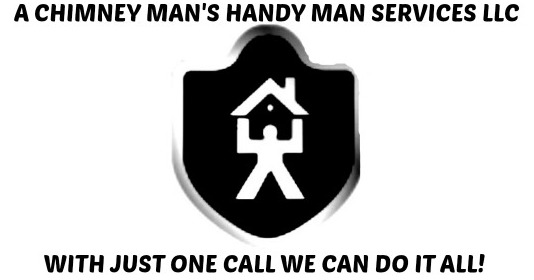
732-367-8988
